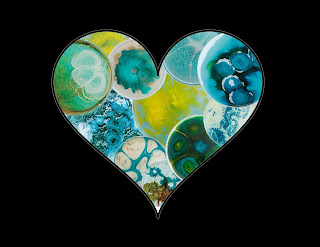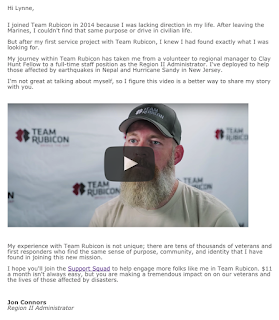I hope you enjoy this guest post from DRG Group contributor, Ashley Rowe.
Cheers,
Lynne
The DRG Group talks a lot about
ways to surprise and delight donors. It’s easy to get caught up in daily tasks,
but it’s important for us to take a step back and look for ways to genuinely
connect with the people who support us.
What can we do to exceed expectations
and put a smile on a donor’s face? How can we find unique and meaningful ways
to express gratitude and nurture these relationships?
The handwritten note or a
personalized video are favorites around here, but what are some other ways you
can customize a donor’s experience with your organization? Often times, there
isn’t a simple answer.
The best way to accomplish this is
to know your donors as individuals. I’m not just talking about their name,
profession, lifetime giving amount, giving capacity, or the last time they
wrote a check. I mean really know them on a personal level and find ways to
engage in meaningful interactions with them. Let me give you an example.
My institution works with many
corporate partners. Recently, our primary contact at a company we work with
often lost her husband in a tragic accident. He also happened to be an artist
who had donated some work to be displayed in one of our buildings. Kudos to our
Stewardship Manager, who came up with a unique way to express our sympathy. She
asked me to create a heart-shaped collage made up of photos of his donated
artwork.
Now, I’m not a graphic designer by
any stretch of the imagination, but my focus was less on what I couldn’t do, and more on finding a way
to create a simple gesture that would mean something to this man's wife. Along with
the graphic, we included a short message about the impact of his artwork. We wanted her to know that we appreciated what he shared with us and that he would continue to inspire others.
Do you know what the best part was?
They weren’t major gift donors. They were generous people who supported our
mission in any way they could. Creating a moment of genuine, human connection
cost us almost nothing. The result was that we made someone feel supported in
the midst of a tragedy.
I’m not sure if this donor will
ever make a major gift, and to be honest, I don’t care. I was glad to be a part
of creating something different, personal, and meaningful.
At the end of the day, we’re all in
this business for one reason - to help people and make a difference. Sometimes
that means stepping outside the confines of our daily routine to do something
special for those who support our work.
How have you personally connected
with a donor? What unique ways have you expressed your gratitude for their
support? I’d love to hear your stories in the comments.







